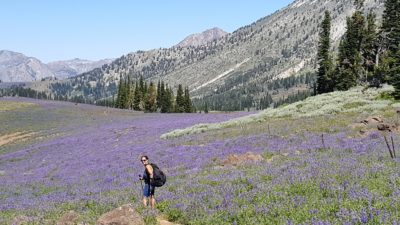
The Granite Mountains Sprawl out before Me
Jul. 23 and 24: Dan and I are absorbing the clean mountain air up at 8,500 feet in the northeastern corner of Oregon. Now that’s a long way from home, at least when using a car and not a plane to get here. Last autumn Dan mentioned that he got an email from Raz that the 2016 Wallowa Llamas schedule was released and it was right then that we picked the dates to go on a trek into Eagle Cap Wilderness. Between the trips that overlapped with the Oregon Country Fair and another one with my son’s birthday, there actually was only one option. So at that moment we made a pact and officially signed ourselves up when the New Year rolled around.
This trip did not take tremendous amount of planning on our parts, because it is a guided trek. Yet still, I ordered some books from Amazon about the history of the region. In addition, I perused books Dan already had, checked out topographical maps, and made sure we had everything we needed to head into the wilderness for the week.
Fast forward to today. We started our journey across the vast and varied state of Oregon around 1:30pm from Eugene. We more or less drove straight to Halfway with a couple stops to stretch our legs and eat.
Most people think of Oregon as green and filled with big trees. That is true of western Oregon, which is where the vast majority of the population lives (the Willamette Valley, to be more specific). Yet the eastern 75% has a drier climate and more of it is high desert country. Because it’s also mainly rural, we were treated to animal sightings, both domestic and wild. Frolicking calves chased one another. A beautiful and healthy herd of elk was feasting in a farmer’s hay fields (I am sure we found it to be a lot more charming than the farmer did). In a few hours’ time, we spotted half a dozen herds of antelope and we even saw a bald eagle. On one of our short walks, we were tempted into a grove of ponderosa pines, because the vanilla like smell of the pine bark was completely intoxicating. Not to mention that in the expansive high desert, the sky was bright and screamed “sky blue” like a Crayola crayon.
Just past the Painted Hills, we stopped in the town of Mitchell. I had camped in the park there on my way to the Wallowas three years ago. I believe it had a population of about 150 people then. It hasn’t grown much, but some of the boarded up buildings had new life stirring within them. We joked that Mitchell was becoming gentrified, if you can call Tiger Town Brewing Company, which is still in the development stages, gentrification. Anyway, there is a lot of opportunity for new businesses – if anyone out there wants to stake a claim near the Painted Hills.
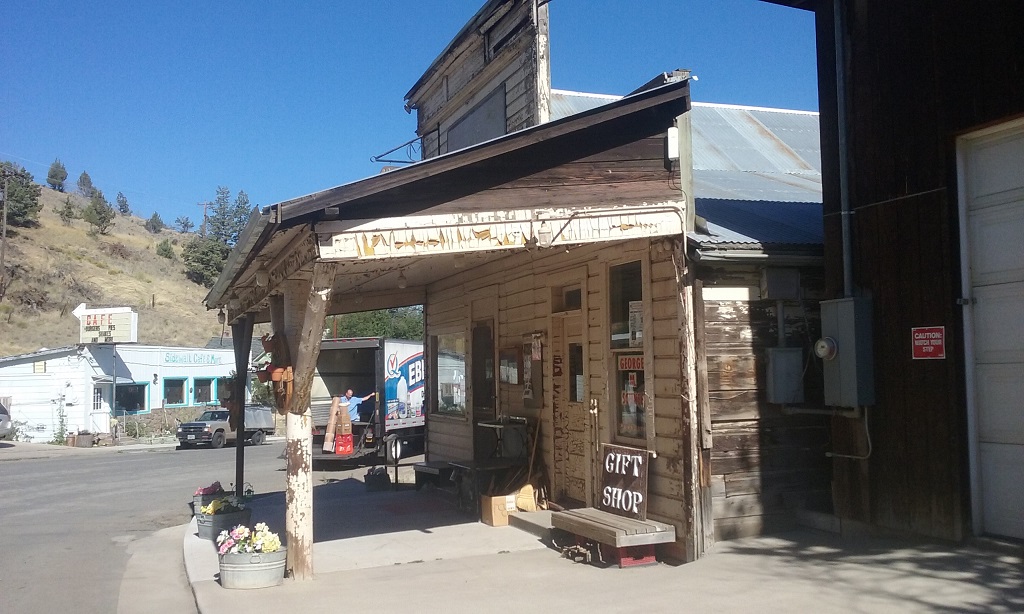
Mitchell Oregon before the Real Estate Boom
While there was still lots of sunlight, I read aloud from the Alvin Josephy’s book, Nez Perce Indians and the Opening of the Northwest, to Dan. It has 700 pages and we were feeling accomplished to squeeze in the 40 page chapter on the Wallowas. It was sad to hear the specific details of how the land was methodically taken away from the Nez Perce. It happened over the course of years. Every time the natives gave an inch and were willing to compromise, they would regretfully have less access to their land. There was even a mix up where the settlers were given the land that the natives preferred and the natives were given land that the settlers preferred. So essentially, the traditional methods of interacting with the land were broken. We didn’t get to the chapters about other regions that the Nez Perce occupied, but it’s safe to say that the story gets repeated again and again.
We scoped out the town of John Day as a resting point for the trip back home on our way through. Knowing we’d get a late start when we departed after hiking most of the day, we both decided it was best to make the trip home in two days. The roads were windy and scenic and it took us a bit longer than expected to get to Halfway. Dark closed in on us, so the last hour of driving was unfortunately in the pitch dark.
We arrived at the Pine Valley Lodge where we had reservations. We stayed in a totally cute miner’s cabin with what appeared to be original fixtures such as the sink, propped up with wine corks. It was filled with old things, like a typewriter and a wooden rocking chair. Pine Lodge was very much imbued with the Wild West feeling. Although it was late, we did force ourselves to stay up and do some pairing down of our bags. I had brought some things for the car ride and to eat the next day. We left books that we enjoyed on the ride to Halfway, but did not want to carry on the hike. And finally we left some supplies we thought were unnecessary.
Beyond tired, we collapsed upstairs in what looked like an old attic that was designed for a mining family. There was one queen bed and two small beds for children, with a cloth divider.
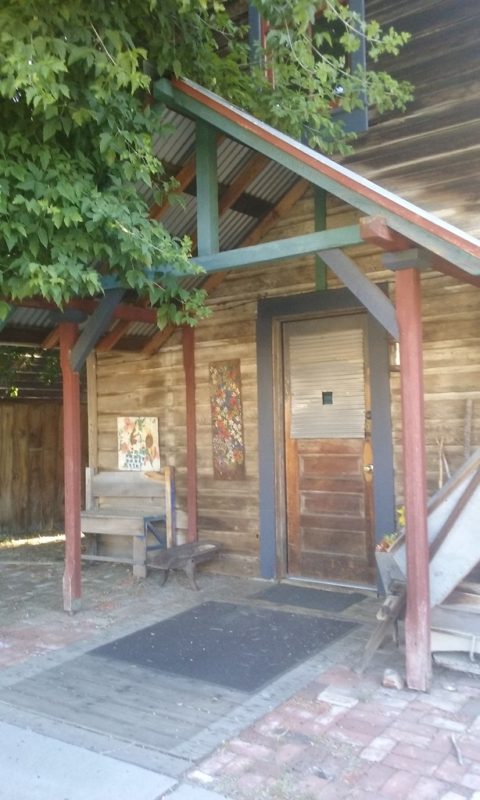
The Cabin at Pine Valley Lodge
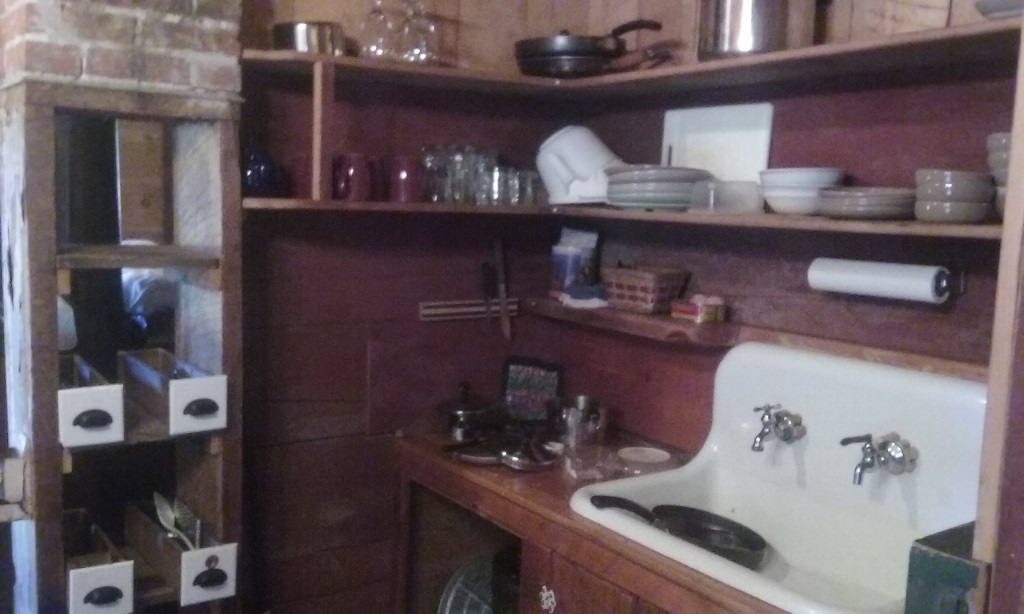
It Has the Pioneer Look, Very Charming
We had a wonderful six hours of sleep, although two more hours would have had us in better stead. We groggily started tying up loose ends and around 7:30am we headed to Raz’ farm, which was just a few miles outside of downtown Halfway.
We were greeted by llamas on a 49 acre farm with well-tended gardens and 40 llamas, about 20 of each gender. The llamas make an endearing whiny grunt as their main mode of communication – it is very sweet! Raz and his helpers were busy getting us ready to go. All of our stuff was carefully weighed to balance the loads for the llamas. Six of the llamas carry about 65 pounds, and the three strongest llamas carry about 95 pounds. The participants took it upon themselves to introduce each other. Louise, Raz’ wife was also in the mix and we thanked her for doing the cooking beforehand.
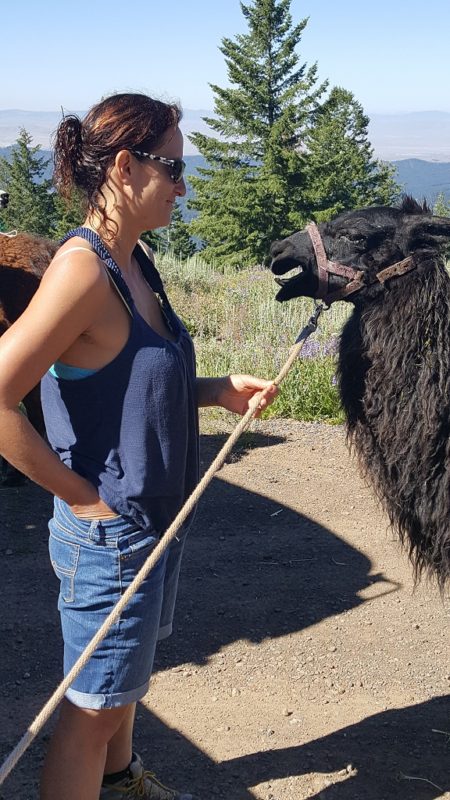
I Was Delighted to Meet the Llamas
In short order, we were loaded into a 50 year old school bus along with six of the llamas loaded into the back of the bus. There was a divider and while it sounds a bit wacky, it was a great system that worked well. There was a pick-up with a trailer to hold additional llamas. Dan and I took note that when the helper put them in the trailer in the wrong order, they got miffed. They did not like the non-compliant pecking order and they started fighting.
The bus chugged along at a slow and steady pace (just like the llamas were going to do). When we started climbing in elevation, the bus was going close to five miles per hour. Raz explained that the bus has a double rear end, meaning it has eight gears, so it can go in super low gear. On the ride up, we got further acquainted with the participants. Raz had two helpers, Jim and James. And there were nine participants on the trip. A family of four from Portland with two young adult children. A married couple from outside Seattle area. Dan and I. And a single woman, who lives in Washington. Her husband was having her check out llama trekking before he decided, if he wanted to try it out.
Forty five minutes later, after we ground our way up tiny one lane mountain roads in first gear, we arrived at Summit Point, which is about 6500 feet elevation. The llamas were unloaded from the vehicles, and we followed Raz’ instructions to help saddle them up. He shared some homemade beef jerky, spiced mango, and gorp. Raz told the group to go ahead and begin hiking, after giving us instructions on following the correct route for three miles. The llamas go slowly due to the load and they would be following behind.
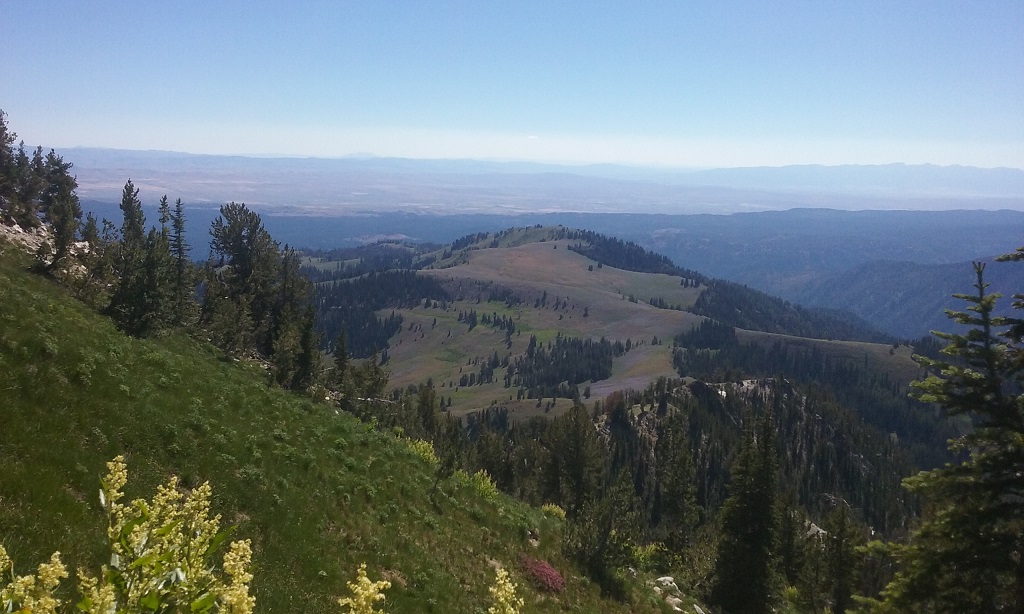
I Was Even More Delighted to Be Dropped off in Such Scenery
We would be spending our time in the southern half of the Wallowas, which is less populated and visited than the northern side, which houses the well-developed Wallowa Lake. Our time would be focused in the Eagle Cap Wilderness. To give you a little bit of understanding about what wilderness actually means. Wilderness may be managed by four different federal land management agencies. Eagle Cap is part of the Wallowa National Forest and managed by the Forest Service. Hunting is allowed and in general, logging, mining and motorized vehicles are not allowed. Yet, there are exceptions, due to some grandfathering. Wilderness needs to be at least 5,000 acres and not have noticeable human presence. It must also contain features that are deemed ecologically, scientifically, or historically significant.
Our lunch spot was in a meadow and for the last mile, we were afforded spectacular views of purple lupine forming a carpet up and down the lower hillsides. Although the smell was different, from a visual perspective, it approximated Provencal lavender fields. The lupine actually had a musky saltwater smell, although it’s hard to fully describe it.
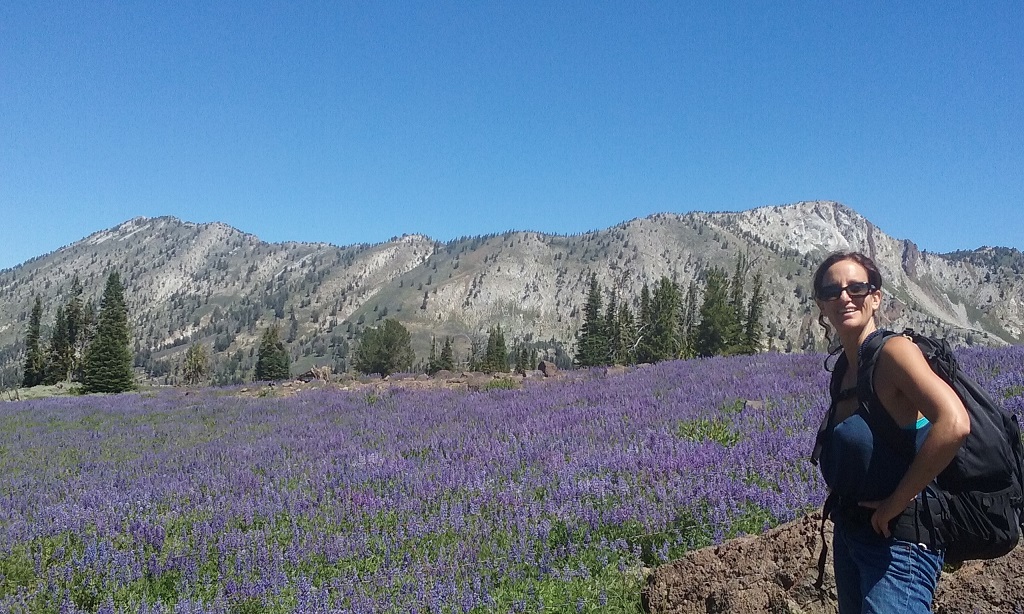
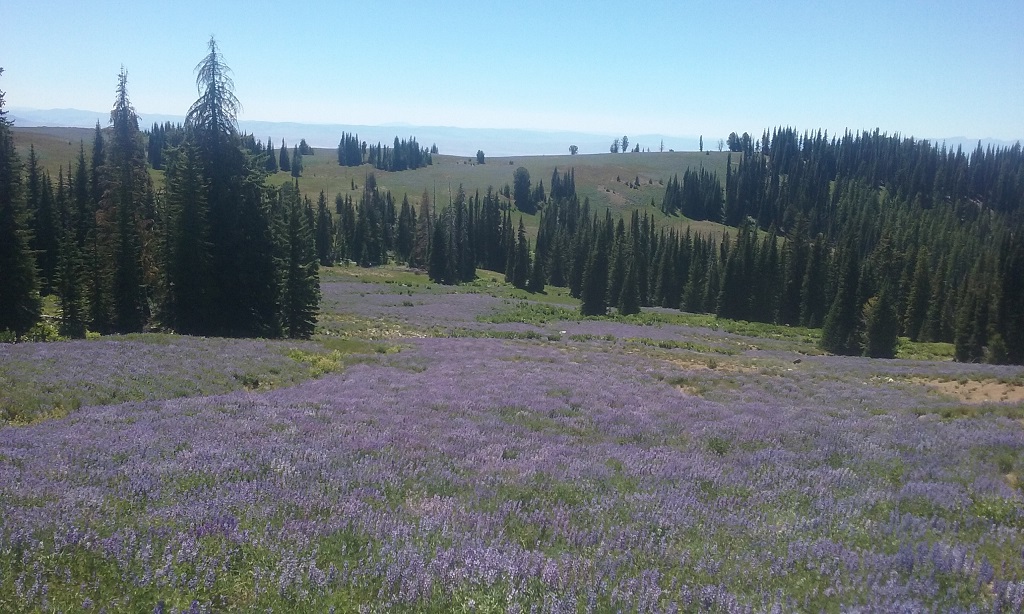
Lupine Looks like Lavender and Smells like the Sea
The llamas were tied and found places near the lunch spot to sit and chill out and browse. They needed no other food to come along, they get all the nutrition they need from browsing. Cattle graze on grass, but llamas, like deer, browse on grass and shrubs and herbaceous plants.
Raz explained a little llama ancestry. The llama and the camel share a common ancestor that lived in North America. Much in the way the monkey and the human share a common ancestor. The common ancestor traveled in two directions. The ones that went north crossed the Bering Strait into Asia and evolved into the camel. The ones that went south into South America evolved into vicunas and guanacos which were eventually domesticated and became llamas. When you look at a llama, it looks a lot like a camel!
At some point, we were ready to carry on and Raz gave us more instructions for the next four miles. The lupine seemed like it would never end as we could see it miles in the distance, but eventually as we climbed in elevation, it did become more sporadic. We methodically trudged up the mountains and all the while were in awe of the magnificent vista views that shifted with different perspectives. While we were loving the scenery, as the hours passed and the sun was beating down on us, our legs were feeling heavier, especially when we hit some steep spots.
A delightful moment was when we came to a spring that gushed out of the rock face on the side of the trail. It didn’t take long for us to empty our warm water and replenish our supply with cold, crisp mountain water. We were liberal with our water intake, since that makes all the difference between feeling good and getting headaches.
Switchback after switchback we finally surmounted the last one and had a view of the three Pine Lakes. It was an epic moment. Although the nine of us were hiking at different paces, we all stopped at the top and waited for llamas. Raz told us to continue and so we stepped down the mountain on to the first lake. At that point the llamas took the lead and we followed them. We veered off the trail and arrived at one of Raz’ delightful, secret campgrounds.
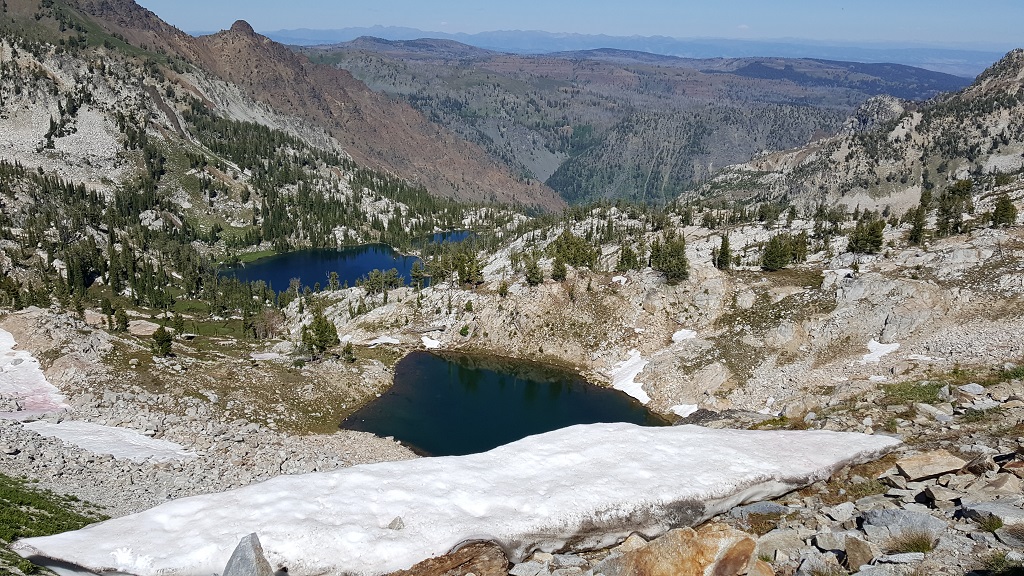
We Inhaled Deeply to Drink in Our Arrival at Pine Lakes
Our campground was carpeted with early spring wildflowers like shooting star and buttercup and elephant’s head. Raz told me that the snow had only melted a few weeks ago. The growing season is short, only about three months, so things come on fast and furious to make hay at 8,500 feet while the sun shines. We were the happy recipients of this fast and furious flower show.
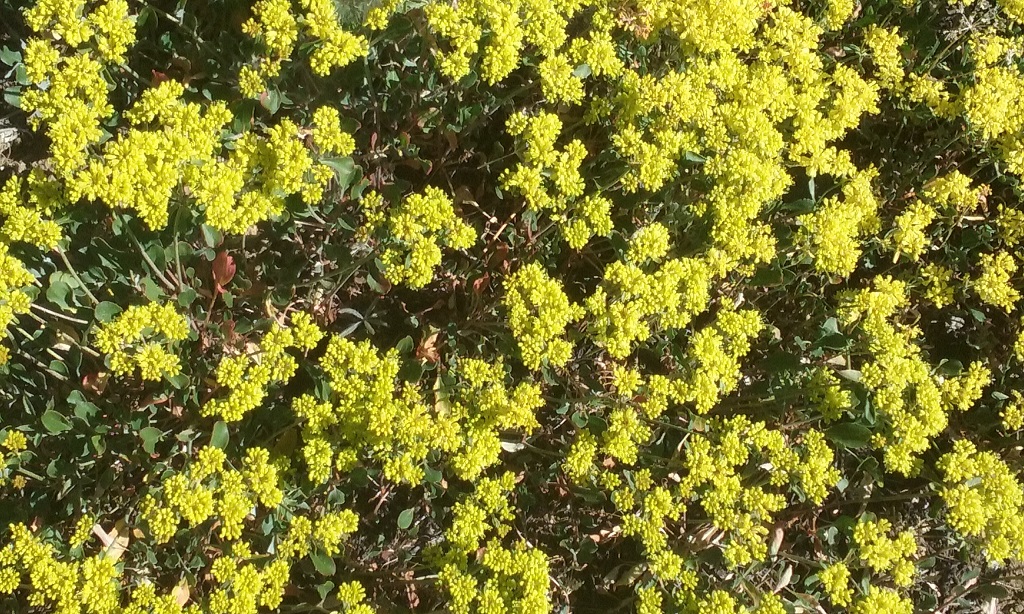
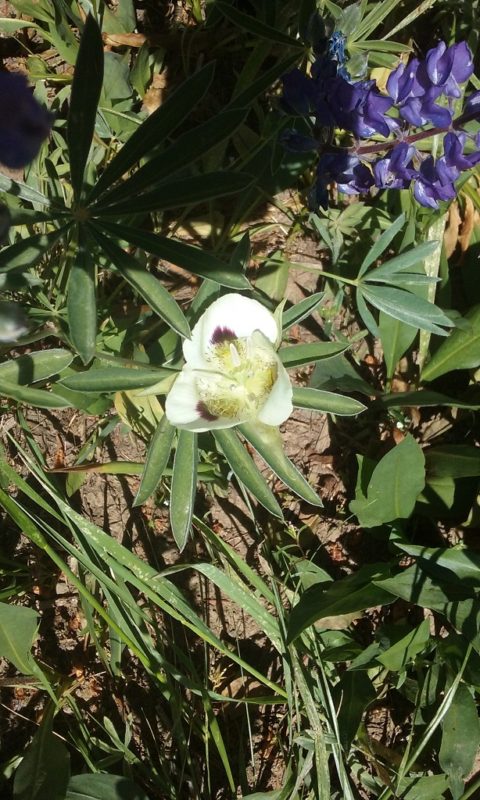
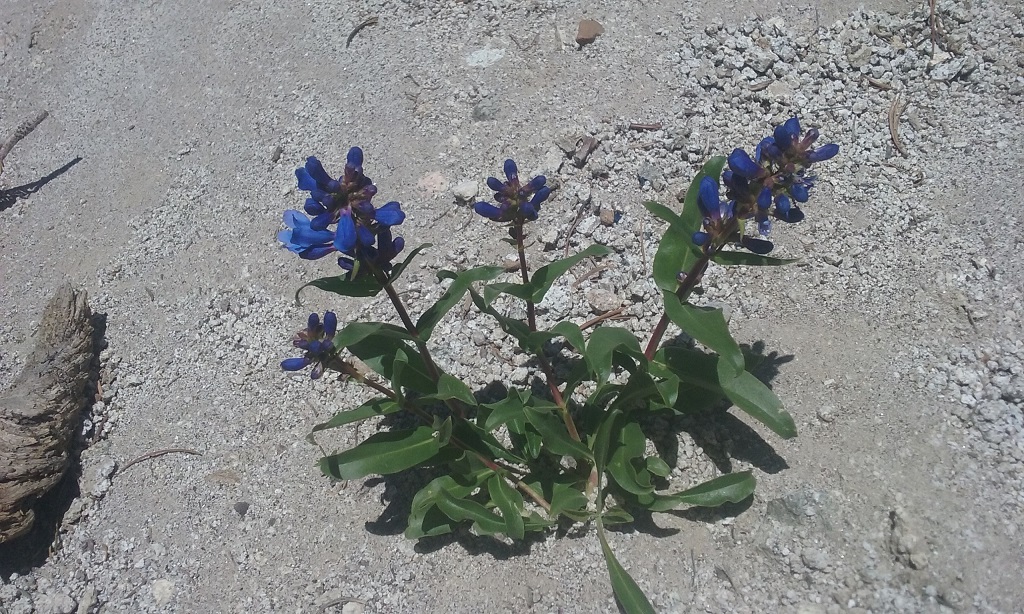
Wildflowers Along the Trail
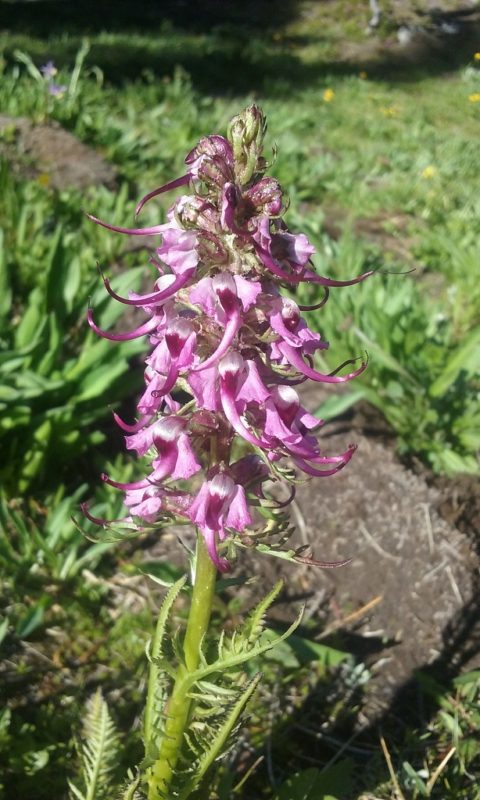
Pedicularis, Otherwise Known as Elephants Head
We all helped to set up camp, which in part involved taking the llamas to their camp for the night. We paused at the stream for them to drink. However, they didn’t drink much, which amazed me. If I were wearing a wool coat and schlepping 65 pounds of gear in 85 degree weather, I’d drink the whole stream dry. Raz handed out tents which had plenty of space. And all things considered, we were in pretty luxurious quarters.
We took a nap since we felt sleep deprived from the night prior. We also had just done a total of about seven miles, with 2,000 foot elevation gain. Although with the ups and downs of the mountains, we actually should be given proper credit for doing even more.
When we got up, people were gathering around the cooking area. Raz had a whole dining room set up, including an oven and he was serving wine along with dinner. Louise prepared chicken in raging bull sauce and couscous with homemade bread. Dining in such fashion prompted conversation about nutrition. People conversed in a convivial manner throwing out ideas and preferences. I was surprised (maybe I should not have been), but Raz even had Jim and James do the dishes. I offered to help and they declined.
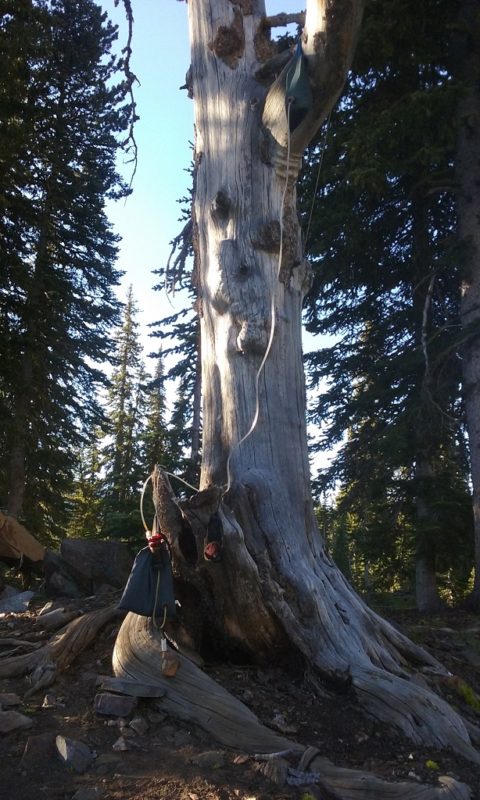
Raz Set up a Gravity-Fed Water Filtration System
The eastern sky showing the Seven Devils Mountains in Idaho was turning pink and blue. This remarkable beauty was in part due to the haze from the forest fires. The particulate matter in the air refracts the light and causes the clouds to display very dramatic colors. More so than when the air is clear and clean.
We chit chatted with Raz about his trips and business and soon enough, all the parties made their way to their tents before dark. Dan and I are enjoying blogging in the tent while the stream serenades us. We took peeks at the star filled sky and confirmed what a great trip this is, before we are heading off to dreamland ourselves.
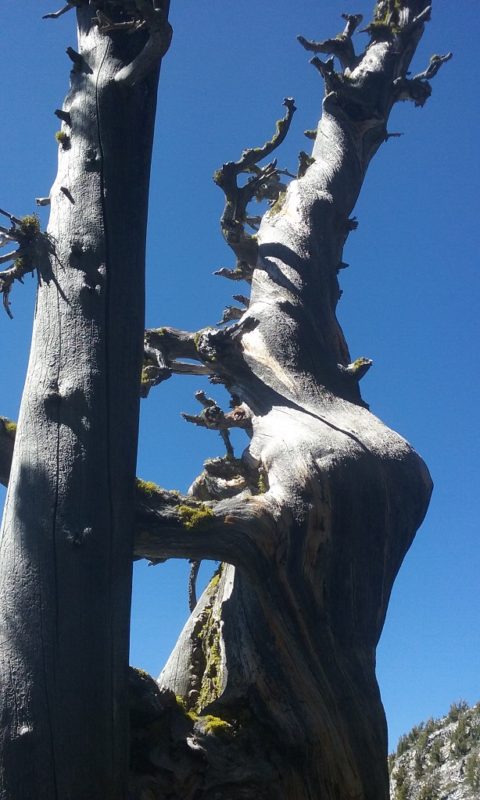
Tree Sculptures
